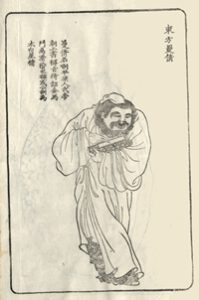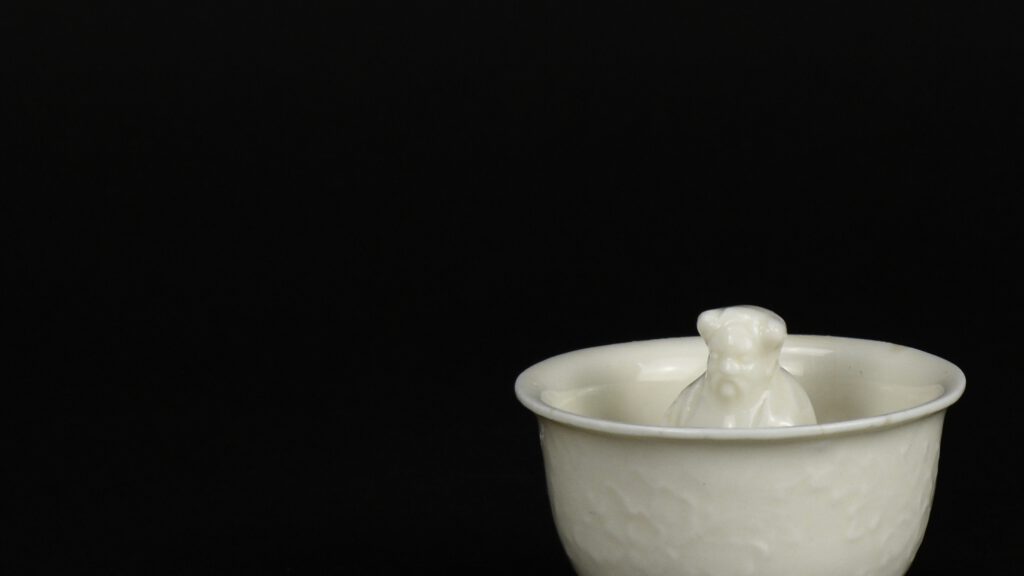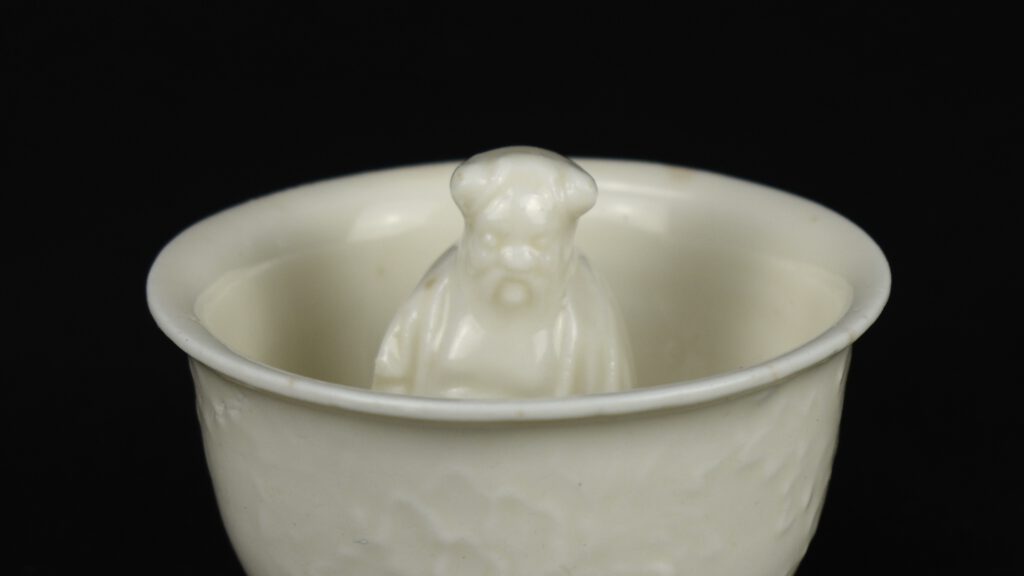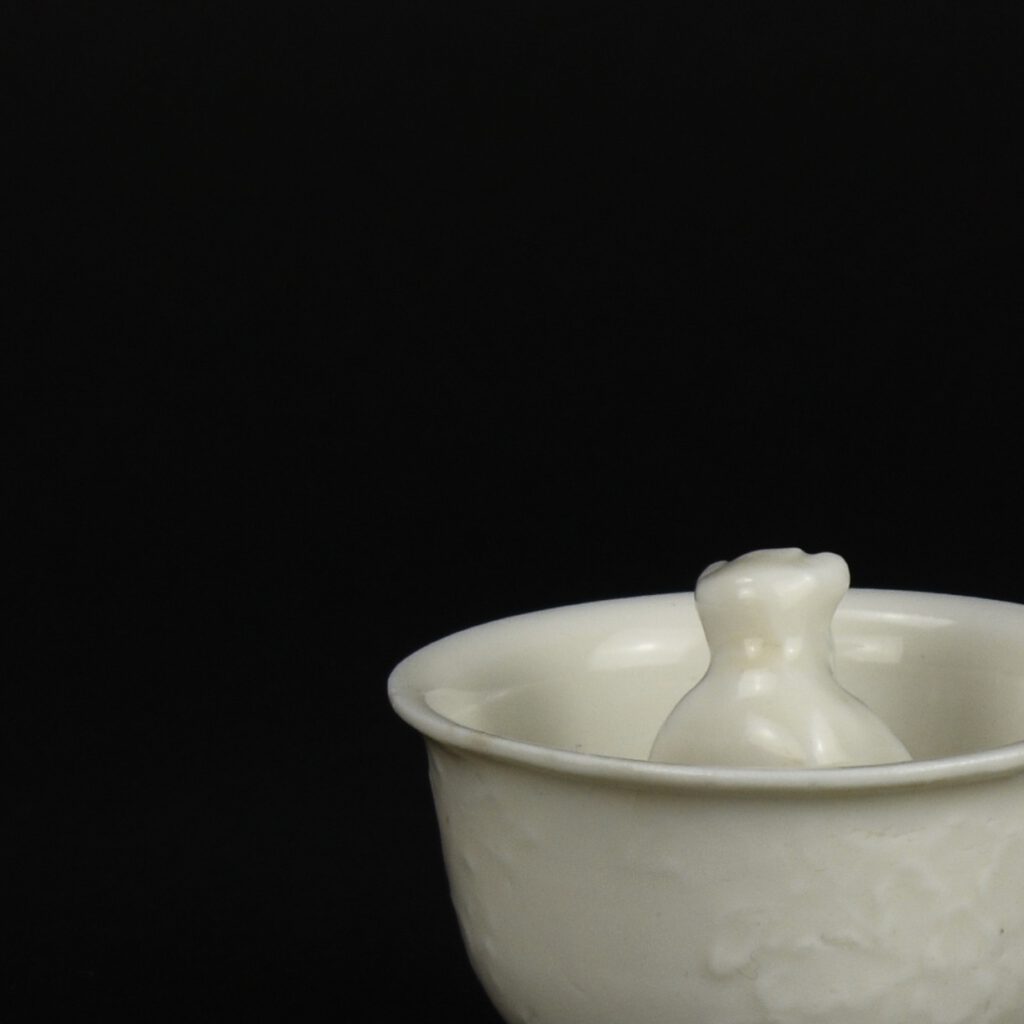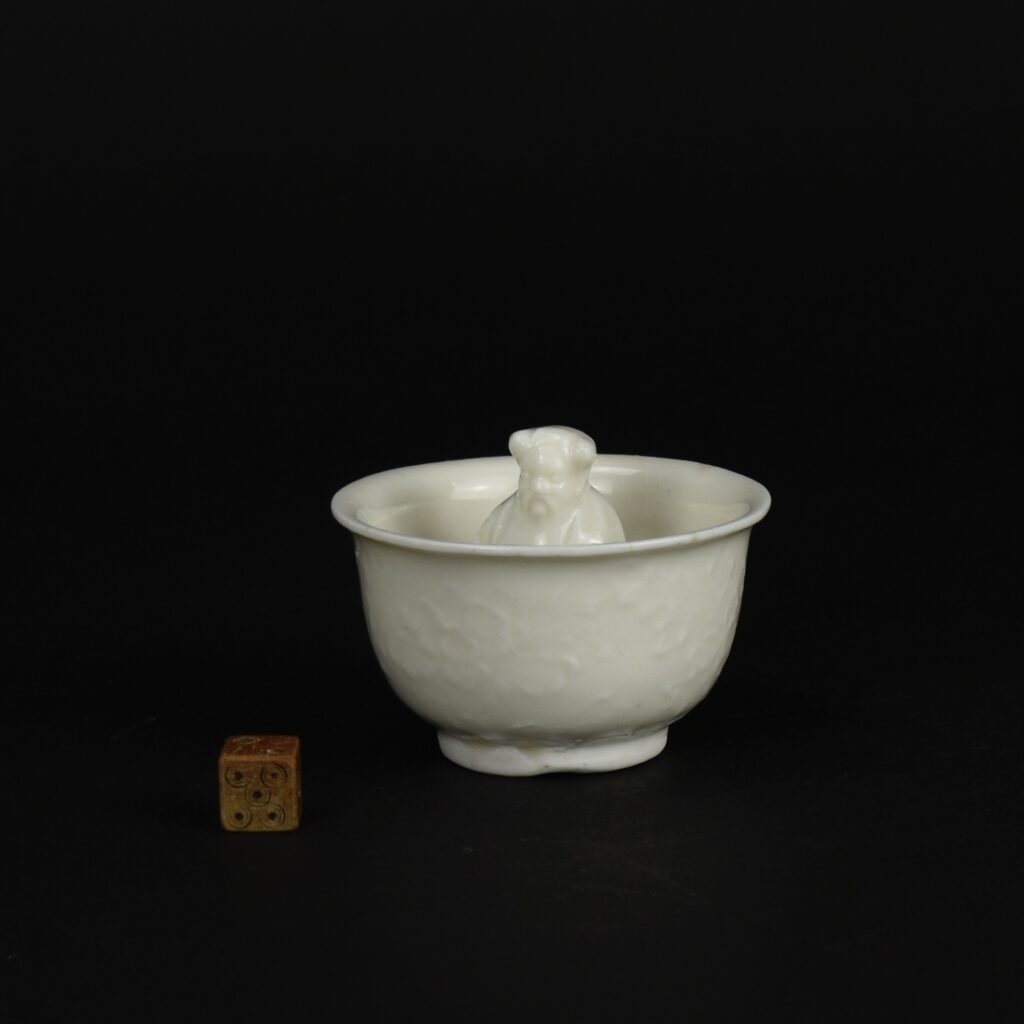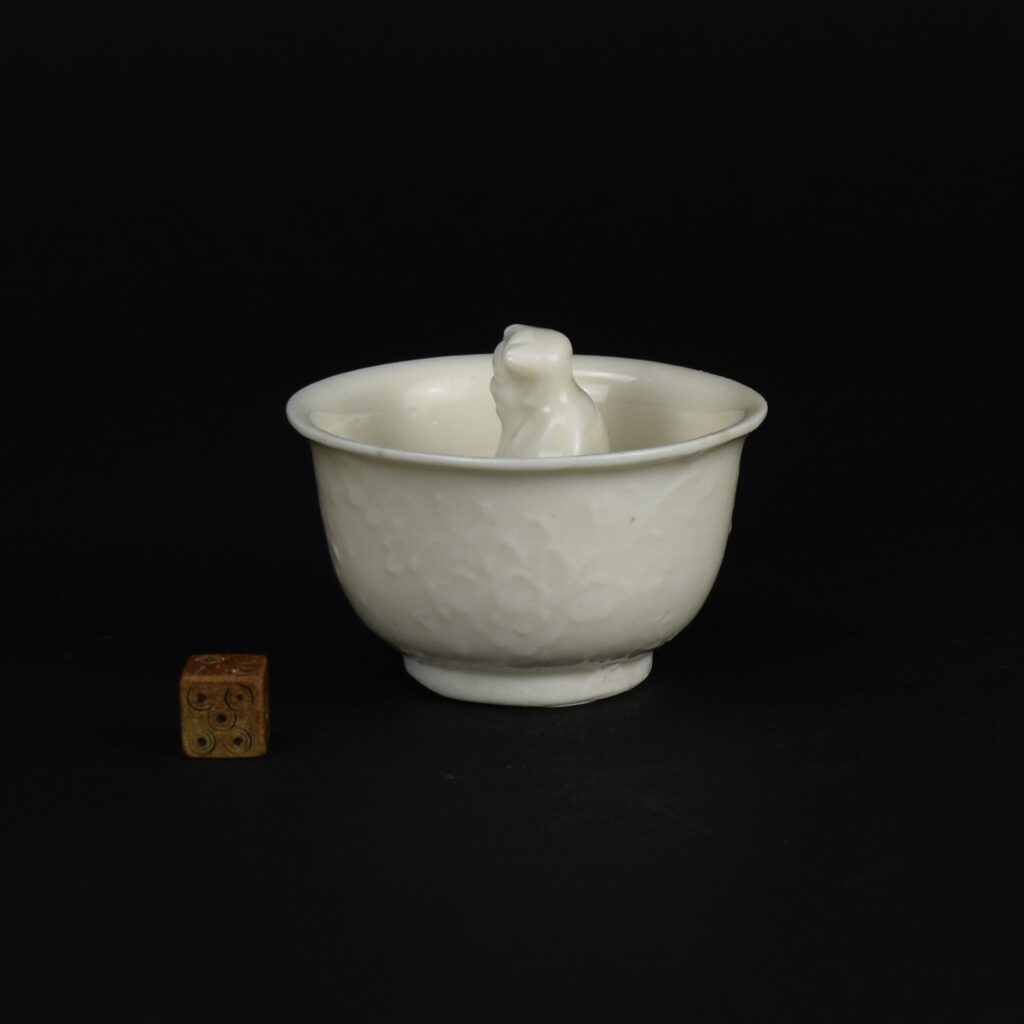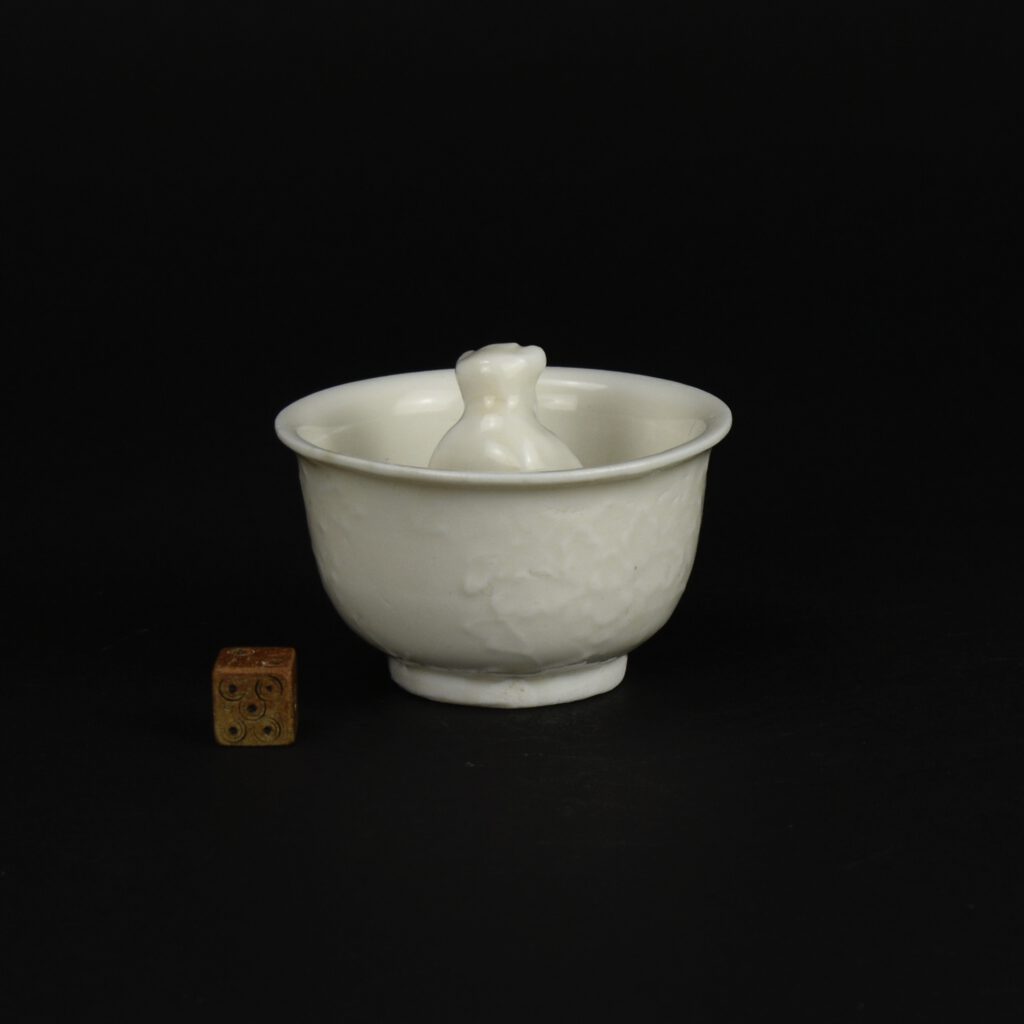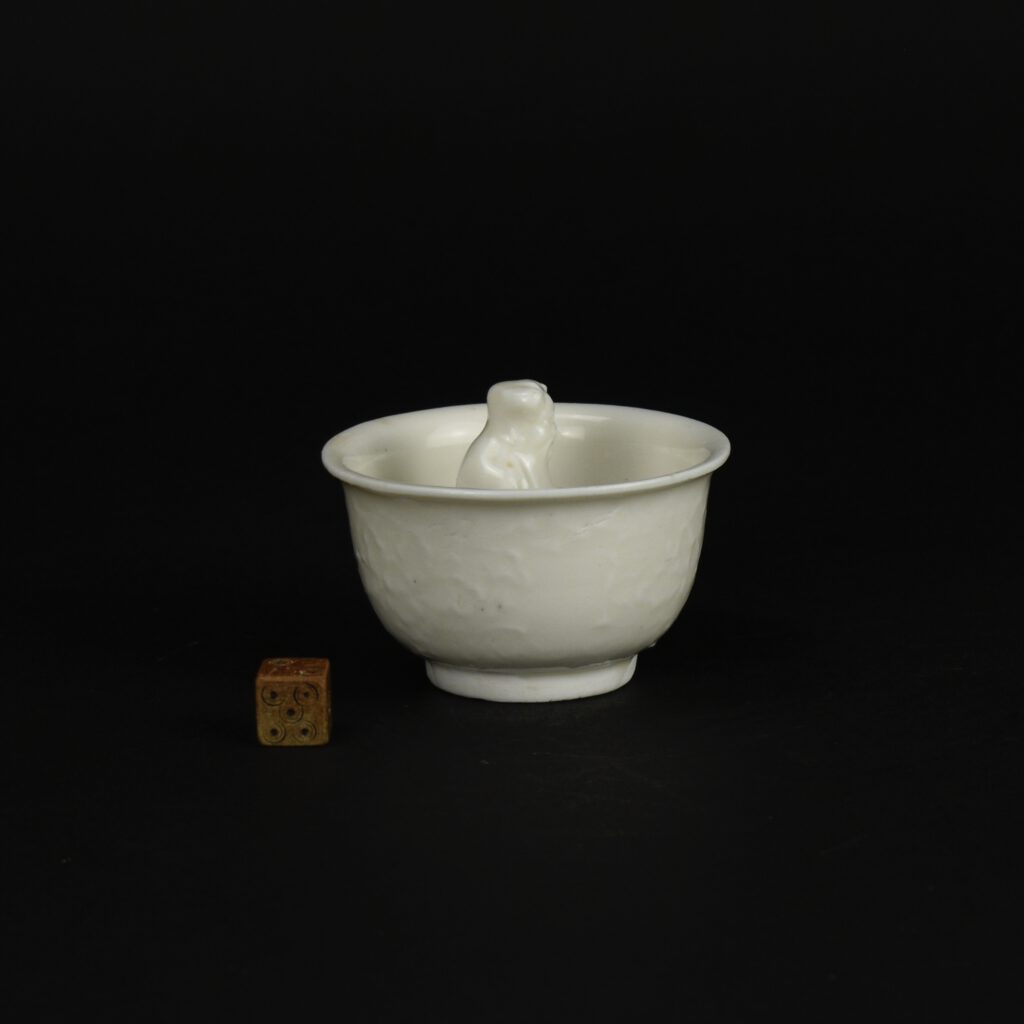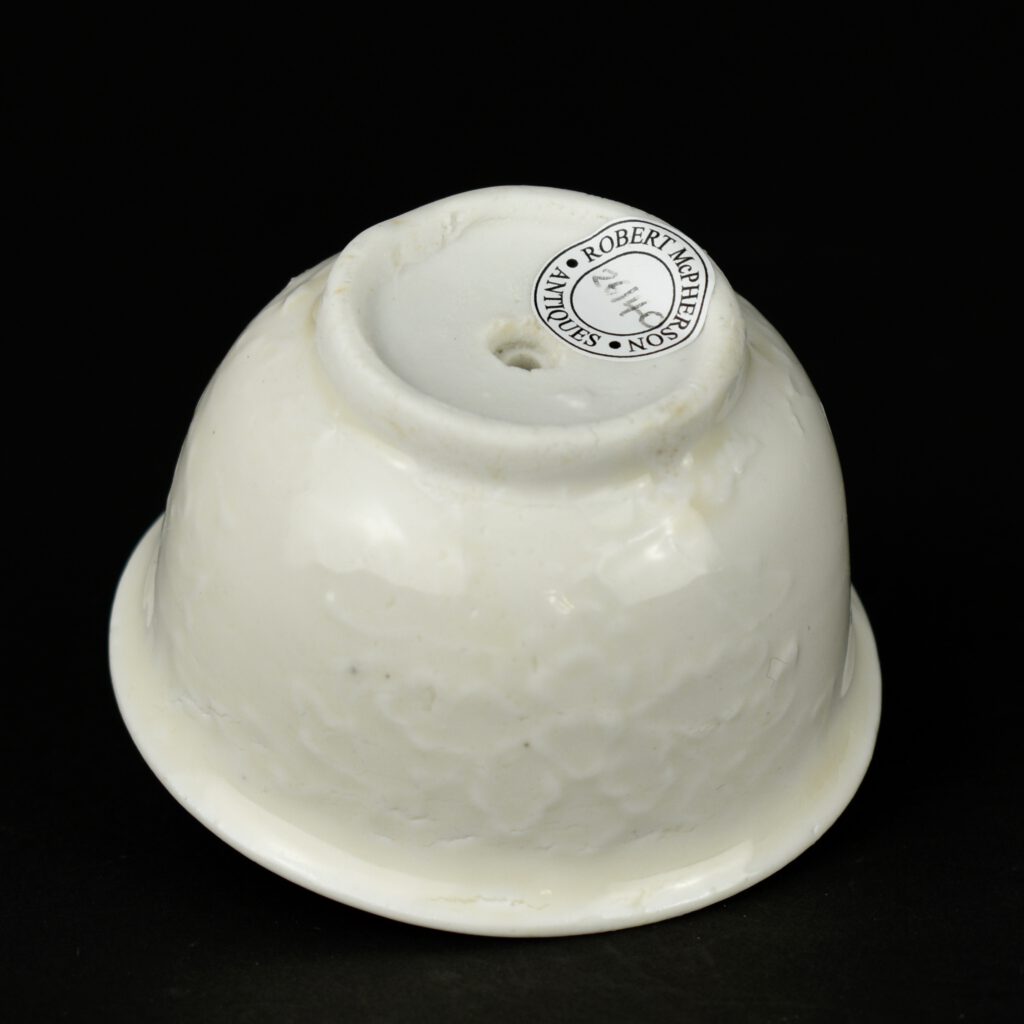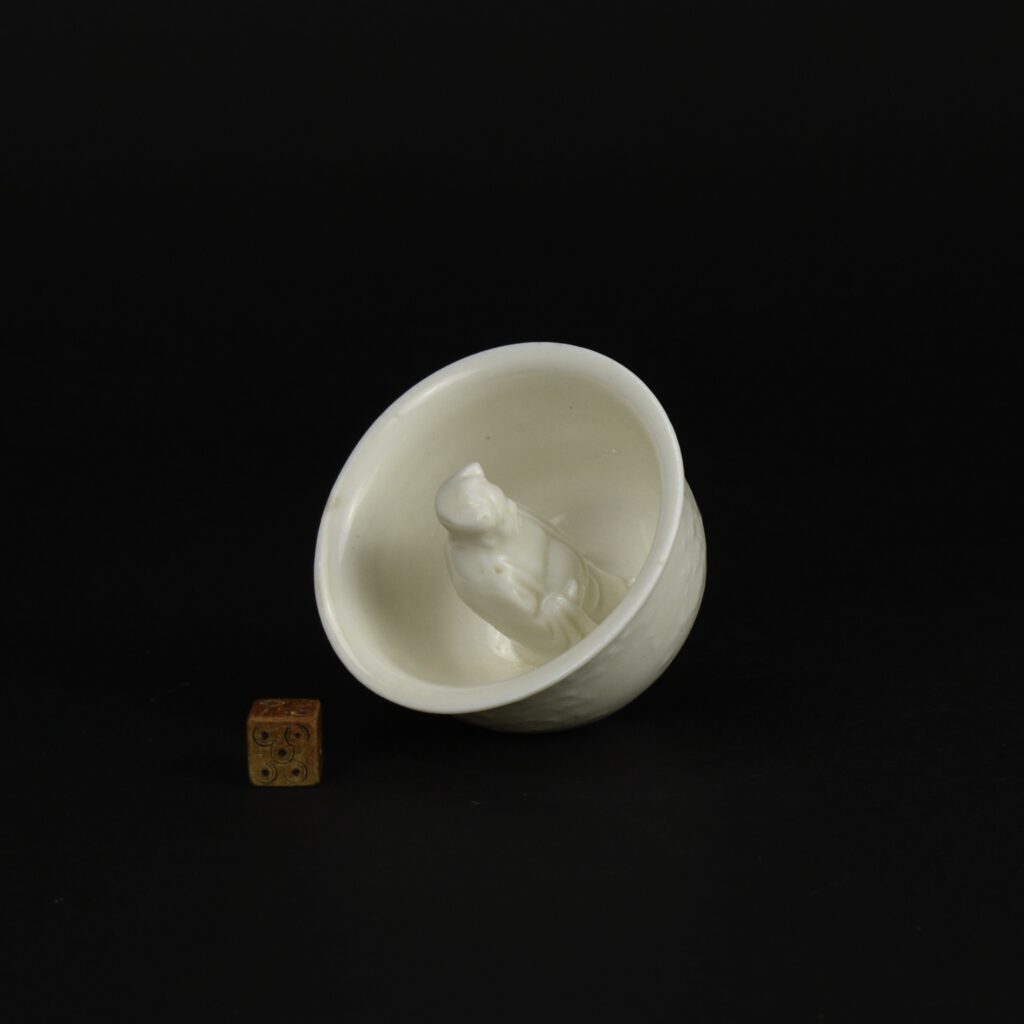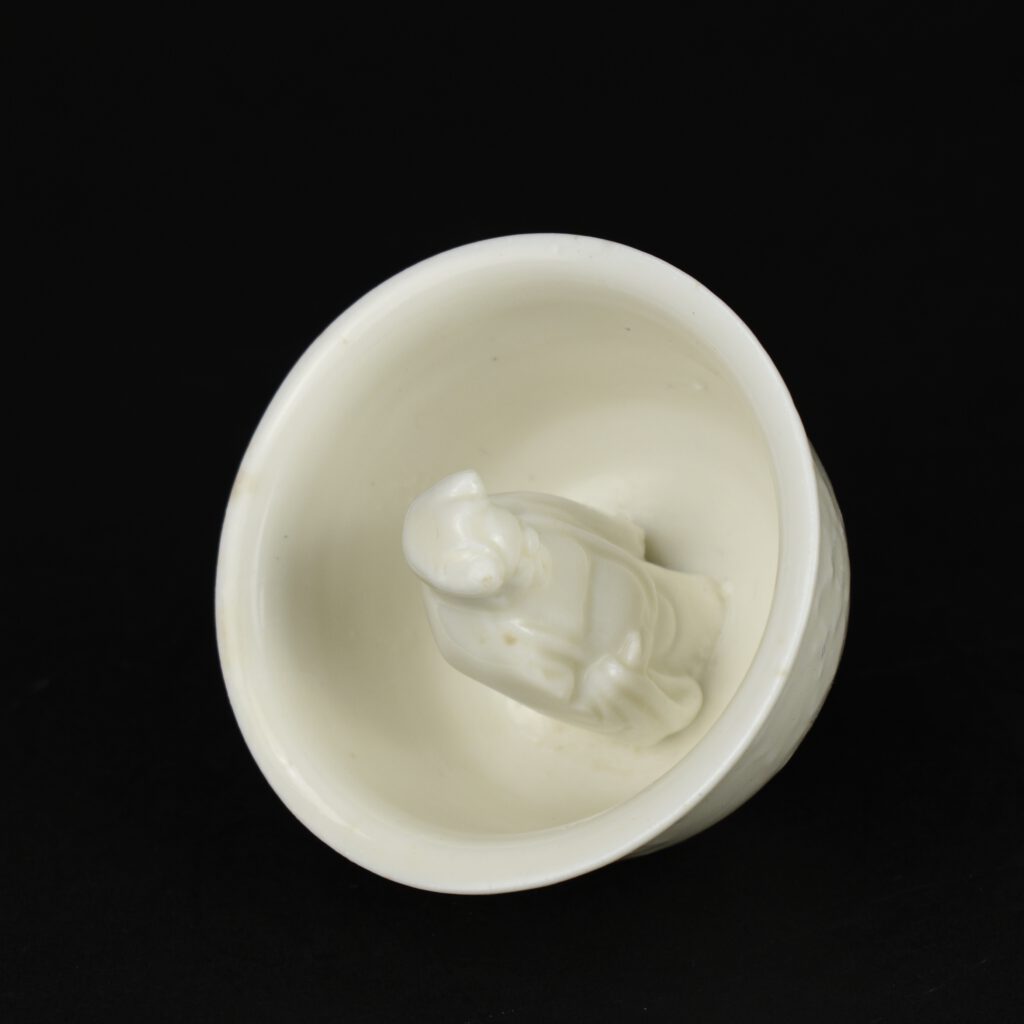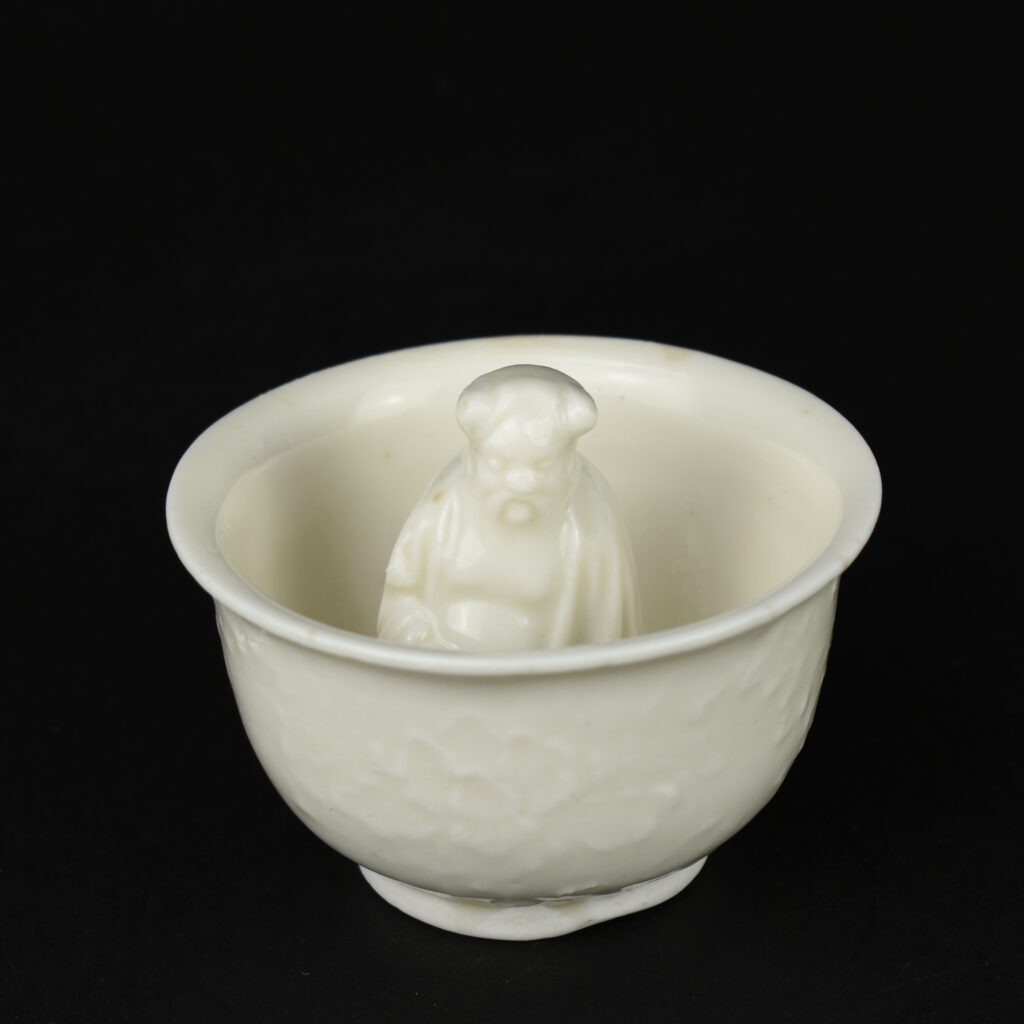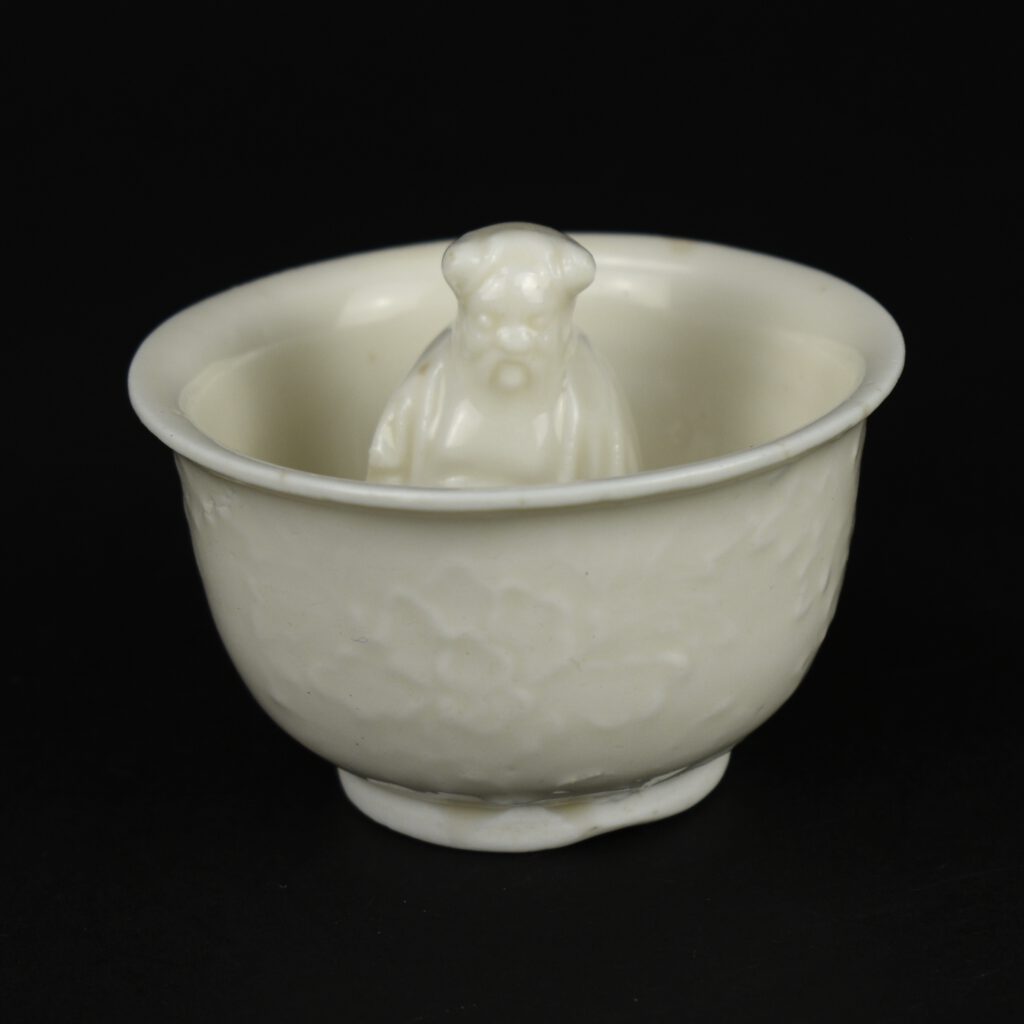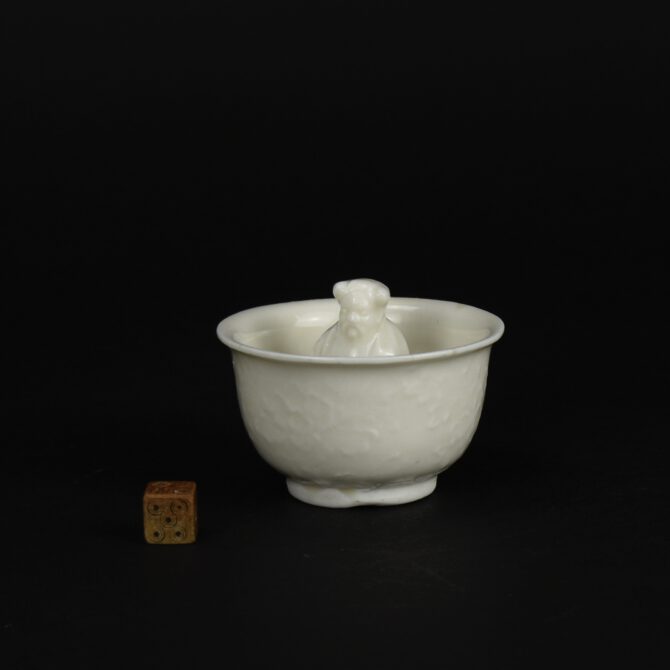
A 17th Century Blanc de Chine Porcelain Trick Cup
A 17th century Blanc de Chine Porcelain ‘Trick Cup’ from the The van Daalen Collection, Dehua kilns, Fujian Province c.1640 – 1680. The external wall is moulded with flowering peony and in the well of the cup is one of the Xian `The Eight Immortals`. The Chinese Immortal depicted is perhaps Dong Fang Shuo (see below the photograph gallery). There are comparative Blanc de Chine trick cups below as well. Trick Cups or `Gong Dao Bei` (`don`t be greedy cup` or `fairness cup`) were wine cups where the wine would drain over the lap of heavy drinker. They illustrate the classical Chinese paradigm that modesty brings gain and arrogance results in loss. If you fill the cup to the top, taking more than your share, every drop will drain out onto your lap through a hole in the bottom, but if you are modest and only fill the cup half full you will be able to drink normally. The earliest cups of this type were made during the Song Dynasty (960-1279) but most are 18th or 19th century. For examples in Blanc de Chine as well as celadon with cobalt-blue and copper-red see our. For more information on trick cups and a description of how they work see : Chinese Puzzles, Games for the Hands and Mind, Traditional Chinese Puzzles from the Yi Zhi Tang Collection (Wei Zhang and Peter Rasmussen, Chinese Culture Center of San Francisco, 2008. ISBN 978-1-58886-101-6) pages 76 and 77.
SOLD
- Condition
- In very good condition, minor glaze cracks/crazing. The foot has been slightly dented prior to firing.
- Size
- Diameter of the bowl 7.1 cm (2 3/4 inches)
- Provenance
- The van Daalen Collection - Albert van Daalen’s family descended from Jan Albert Sichterman (1692-1764), who worked for the famous Dutch East India (VOC) as governor in Bengal for 27 years.
- Stock number
- 26140
Information
Trick Cups / Gong Dao Bei :
Trick Cups or `Gong Dao Bei` (`don`t be greedy cup` or `fairness cup`) were wine cups where the wine would drain over the lap of heavy drinker. They illustrate the classical Chinese paradigm that modesty brings gain and arrogance results in loss. If you fill the cup to the top, taking more than your share, every drop will drain out onto your lap through a hole in the bottom, but if you are modest and only fill the cup half full you will be able to drink normally. The earliest cups of this type were made during the Song Dynasty (960-1279) but most are 18th or 19th century. For examples in Blanc de Chine as well as celadon with cobalt-blue and copper-red see our. For more information on trick cups and a description of how they work see : Chinese Puzzles, Games for the Hands and Mind, Traditional Chinese Puzzles from the Yi Zhi Tang Collection (Wei Zhang and Peter Rasmussen, Chinese Culture Center of San Francisco, 2008. ISBN 978-1-58886-101-6) pages 76 and 77.
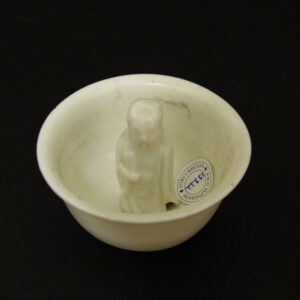
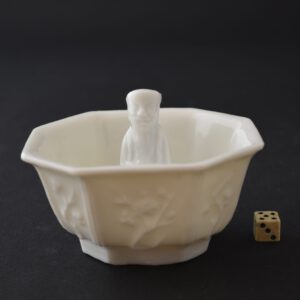
Plum Blossom / Meihua :
Plum (Prunus), Meihua, is one of the most important plants in Chinese art. Their flowers grow on knurled old angular branches, the flowers are fragile and pure, so they can be a symbol of vigour in old age as well as purity. The tree is the first to flower after the long hard winter, symbolically it can represent perseverance as well as renewal. This meaning is enhanced by a background of cracked-ice, the design can be seen as representing the end of winter and the beginning of spring with the ice of winter cracking to reveal a new year dawning. Branches of plum blossom convey the `Five Blessings` Meikai wufu, longevity, wealth, health, love of virtue and a peaceful death. The number five, an auspicious number to the Chinese, is taken from the five petals of the plum flower.
Blanc de Chine Porcelain :
The porcelain known in the West as Blanc de Chine was produced 300 miles south of the main Chinese kiln complex of Jingdezhen. The term refers to the fine grain white porcelain made at the kilns situated near Dehua in the coastal province of Fujian, these kilns also produced other types of porcelain. A rather freely painted blue and white ware, porcelain with brightly coloured `Swatow` type enamels as well as pieces with a brown iron-rich glaze. However it is the white blanc de Chine wares that have made these kilns famous. The quality and colour achieved by the Dehua potters was partly due to the local porcelain stone, it was unusually pure and was used without kaolin being added. This, combined with a low iron content and other chemical factors within the body as well as the glaze, enabled the potters to produce superb ivory-white porcelain.
Wushuang Pu (Pictorial album of unique persons) 無雙譜. by Jin Guliang. ca. 1670.
This work contains a collection of beautiful illustrations of forty famous historical figures from the Han dynasty to
the Song dynasty (3rd century BC to 13th century AD). The preface by 宋俊 Song Jun, the author's friend, is dated 1690. It is a single fascicle, woodblock printed, in a traditional stitched binding with soft cover.
